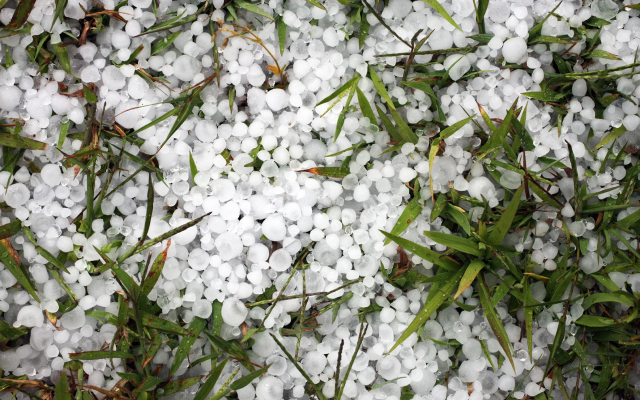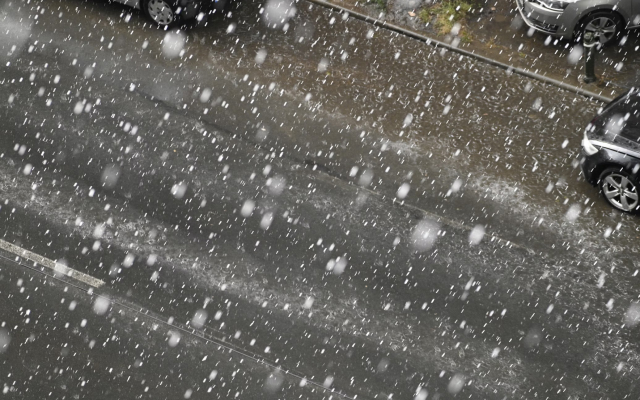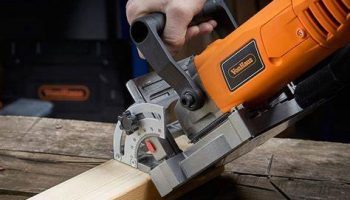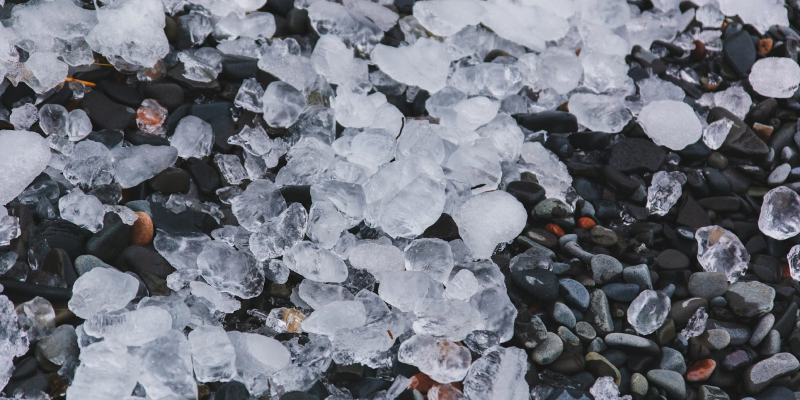Hailstorms can damage your property badly, especially your roof. Hailstorms can compromise the integrity of your roof, leading to costly repairs or even the need for a replacement. Assessing hail damage promptly is crucial to prevent further deterioration and ensure the safety and longevity of your home.
In this comprehensive guide, we’ll delve into the crucial signs of hail damage to your roof and provide valuable insights on how to assess and address the aftermath of a hailstorm.
Hail Damage To Your Roof: A Brief Overview
Hail damage to your roof can manifest in various ways, depending on factors such as the size and density of the hailstones, the type of roofing material, and the age and condition of your roof.
While some signs of damage may be immediately apparent, others may be subtle and require a closer inspection to detect. It’s essential to be vigilant and proactive in assessing your roof for hail damage following a severe weather event.
Whether you’re a homeowner or a roofing professional, this guide provides valuable insights to navigate post-hailstorm assessments effectively.
Key Signs of Hail Damage to Your Roof

When you assess hail damage to your roof, there are various signs you must look out for. They are as follows:
1. Dented or Bruised Shingles
One of the most obvious signs of hail damage is dented or bruised shingles. Hailstones can leave behind indentations or marks on the surface of the shingles, compromising their integrity and waterproofing capabilities. Inspect your roof for any visible signs of dents, dimples, or bruises on the shingles, especially in areas directly exposed to the impact of hail you can also contact roofing companies in Lafayette, LA.
2. Missing Granules
Hailstones can dislodge the protective granules on the surface of asphalt shingles, leaving behind bald spots or patches of exposed asphalt. Check your gutters, downspouts, and surrounding areas for accumulation of granules, as this may indicate damage to your roof. Loss of granules can accelerate the deterioration of shingles, leading to premature aging and susceptibility to leaks.
3. Cracks or Tears in Shingles
High-velocity hail can cause shingles to crack or tear, compromising their structural integrity and waterproofing ability. Inspect your roof for any signs of cracking, splitting, or tearing along the edges or seams of the shingles. Even small cracks can allow moisture to penetrate beneath the surface, leading to water damage and mold growth over time.
4. Soft Spots or Sagging
Hail damage can weaken the underlying structure of your roof, causing soft spots or sagging in areas where the decking or support system has been compromised.
Carefully walk the perimeter of your roof and gently press down on the surface to check for any areas that feel soft or spongy underfoot.
Additionally, visually inspect the roof for any signs of sagging or unevenness, which may indicate structural damage requiring immediate attention.
5. Damage to Flashing and Ventilation Systems
In addition to shingles, hailstorms can also damage the flashing, vents, and other components of your roof’s ventilation system. Inspect these areas for signs of dents, dings, or displacement, as well as any cracks or gaps that may have formed as a result of the hail impact.
Damaged flashing and ventilation can compromise the integrity of your roof and lead to leaks and moisture issues if not addressed promptly.
Assessing Hail Damage to your Rooftop: How do you do so?

After a hailstorm, it’s essential to assess the extent of damage to your roof promptly to prevent further deterioration and ensure timely repairs. Start by conducting a visual inspection of your roof from the ground, looking for any obvious signs of damage, such as dented or missing shingles, granule loss, or cracks in the surface. Use binoculars to inspect hard-to-reach areas and areas with suspected damage more closely.
If you’re comfortable doing so, you can also perform a closer inspection by climbing onto your roof (taking necessary safety precautions). Walk the perimeter of your roof, carefully examining each section for signs of hail damage, paying particular attention to valleys, ridges, and areas directly exposed to the hail impact.
Take note of any areas that appear damaged and document your findings with photographs or video footage to provide to your insurance company and roofing company in Lafayette LA.
It’s also advisable to hire a professional Lafayette, LA roofing company to conduct a thorough inspection of your roof following a hailstorm. Experienced roofing companies Lafayette LA residents trust have the knowledge, skills, and expertise to identify and assess hail damage accurately, ensuring that no underlying issues go unnoticed.
They can provide you with a detailed assessment of the damage, recommend appropriate repairs or replacements, and assist you throughout the insurance claims process to ensure that you receive fair compensation for the repairs.
How do you repair your roof after assessing hail damage?
After you are done assessing the hail damage on your roof, it’s time to get it fixed immediately before any further rooftop damages and injuries happen. Therefore, here’s what you must do now:
1. Get Your Roof Inspected by Professionals
Even if you assess your roof for hail damage, it’s best to get another assessment done by professionals. This is necessary since you might not get to know about internal rooftop damages that are invisible to the eyes of a commoner. Many hidden damages can take place, which only a rooftop repair professional can identify.
In addition, ensure that you get the reassessment documentation from the professionals. While they will typically give you the documentation, ask for it if they say goodbye without giving it! This documentation is necessary for the next step.
2. Contact Roof Repair Contractors
If you followed the last step and got a reassessment for hail damage to your rooftop, it’s best to hire a rooftop repair contractor.
These contractors will look at the reassessment documentation from the step above. This documentation will help them a lot since it lets them understand the extent of the hail damage.
Moreover, based on this hail damage, they will chart out the course for the rooftop repair. Furthermore, based on the repairs that must be done, they will also tell you the costs of the rooftop repair.
3. File Insurance Claims (if any)
If your rooftop has insurance against damages (especially hail damage), then it’s best to file your rooftop insurance now. While doing so is optional, we recommend doing so since it will help you bear the costs of rooftop repair and not sting your wallet like a wasp.
4. Start Repairs
Now that you know what needs to be done after assessing hail damage to your rooftop, start the repairs. Therefore, set a date for your repair contractors (the sooner, the better) to start their work.
Conclusion
Assessing hail damage to your roof is necessary after surviving a hailstorm since it can greatly damage your rooftop. From damaged shingles, missing granules, flashing ventilation systems, and more – hailstorms can cause havoc upon your property.
Therefore, ensure that you assess hail damage on your roof and contact contractors immediately. They will reassess the damage and chart out the best course of action for repairing your rooftop.
Read Also:




























